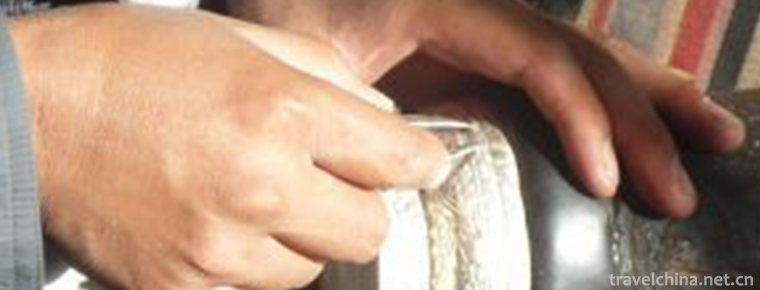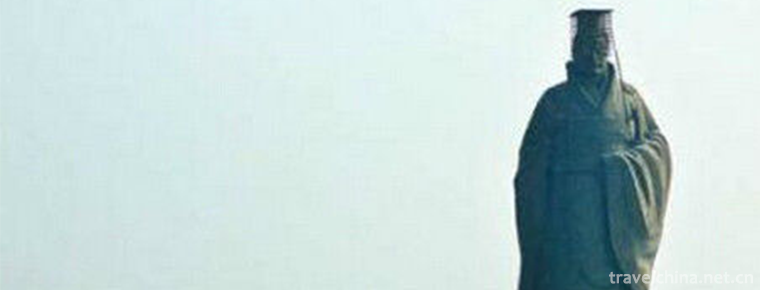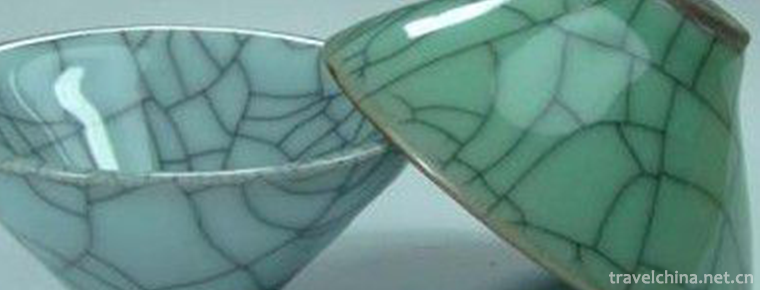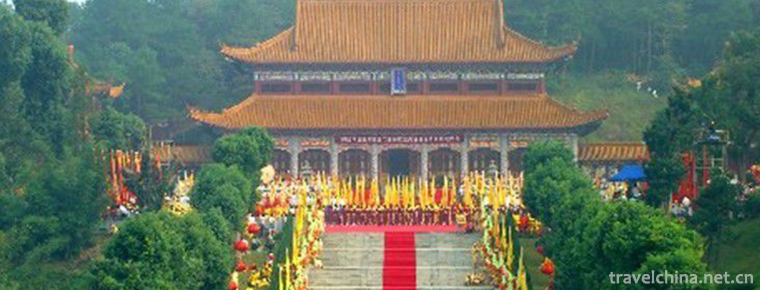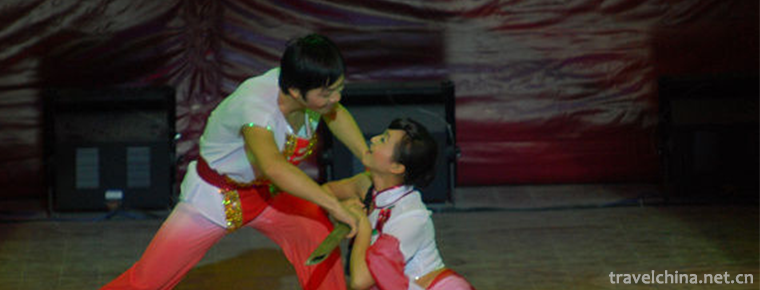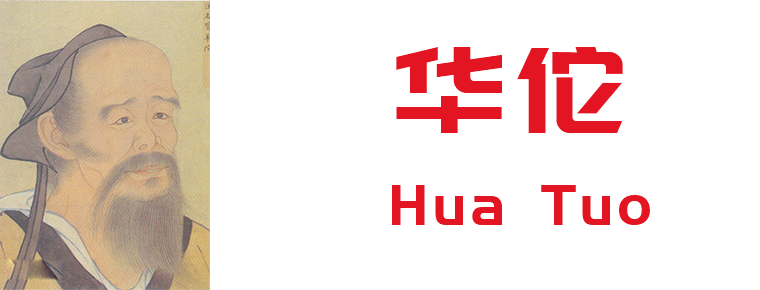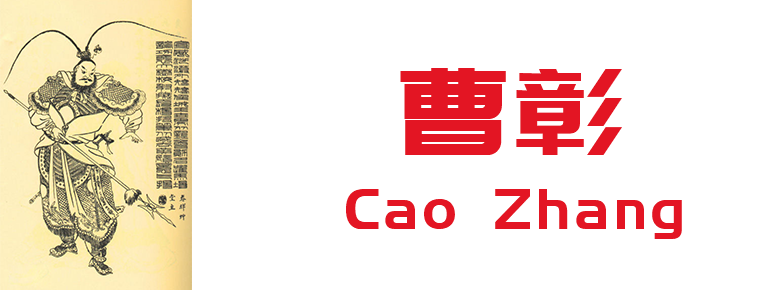Jia Jia Quan
Jia Jia Quan
Amaranth, also known as Amaranth, Amaranth hammer, one of the traditional Chinese boxing. It was founded by Mr. Junai Zhou (1724-1783) in Heshui County, Zhengzhou, in the reign of Qianlong in the Qing Dynasty.
Amaranth is Zhou's learned and hard-working fighting skill since childhood. After concentrating on Zhouyi, penetrating the ups and downs of Yin and Yang, the founder of boxing school, became a skilled martial arts practitioner and great martial arts theorist.
Amaranth boxing is a wonderful flower in the hundred gardens of Chinese Wushu. It is one of the famous Chinese boxing. It has rich content, equal emphasis on culture and martial arts, unity of form and spirit, combination of rigidity and softness, and unique techniques. It is an important part of the precious heritage of Chinese Wushu. So far, it has a history of nearly 300 years.
On June 7, 2008, Qianjiaquan was listed in the second batch of national intangible cultural heritage list with the approval of the State Council.
brief introduction
Cultural Heritage Name: Qianjiaquan
Date of declaration: 2006
Declarer/Declarator: Xingyang City, Zhengzhou City
Heritage Level: Province
Emperor Na Zhou
Its founder, Mr. Qian Naizhou (1724 - 1783), Ziluochen, and Qian Village in Heshui, Henan Province (now Xingyang City), moved to Houxinzhuang. Since childhood, he has learned a lot and studied hard the skills of fighting. After concentrating on Zhouyi, penetrating the ups and downs of Yin and Yang, the founder of boxing school became a skilled martial arts practitioner and great martial arts theorist, known as "a rare generalist in the history of Chinese martial arts".
Master Qian Nai Zhou, who was taught by Liang Daoists in Sichuan and was instructed by Yan Shengdao in Luoyang, did his best by Zhang Ba from Tiger Lao. We have carefully studied various schools and learned from all their strengths. We have integrated the principles of Yi Li, medical science and boxing. We have fused the internal gas, shape, techniques and a furnace to create the school of Amaranth Quan in the world.
At the age of 20, he participated in the compilation of Heshui County Chronicle. He was known as a Confucian Boxer because he was good at fighting with his literati. He will study and write books and drawings, spread to future generations, "Zhongqi Lun" is the core theory of Qijiaquan, guiding the program of Qijiaquan. Among them, Wushu theories such as the theory of combining rigidity with softness and the theory of Nourishing Qi are highly respected by Wulin colleagues. Quan Pu, Gun Pu, Sword Pu and Stick Theory, written by Qian Nai Zhou, are excellent in martial arts because of their delicate principles and abundant pictures and texts.
Boxing
However, for a long time, experts, scholars and even their descendants have said a lot about Mr. Qian Nai-zhou's martial arts career, teacher's acceptance, the establishment and formation of the school of Qian Jia-quan, which is not conducive to the inheritance and development of Qian Jia-quan. After years of investigation and research, the author believes that Qian Nai-zhou Wugong-gen was based on the skill of Zhang Ba (Wushu artist at the end of Ming Dynasty) in Heshui. He was instructed by Yan Shengdao, a famous master, and later acquired the secret biography of "Ziquan". From this, he created 72-force boxing (upper, middle and lower 24-force) and then attributed it to biased and positive 24-character boxing. His stick principle was inherited from Liangdao, Sichuan Province, and Kendo was learned from Wang Xinxiang in ancient times. The following are the following:
According to Qian Naizhou's Preface to the Twenty-Four Boxing Scores, Yu Chengtong is fond of fighting. Deeply ashamed of accomplishing nothing. In the last ten years, when I met Yan Shengdao in Luoyang, Henan Province, I felt very profitable, and in a few years I got forty methods of Chinese character boxing. Thirty-two pieces were assumed to be added up to seventy-two pieces. However, it was classified as about twenty-four pieces, named after the name, indicating the knowledges, which made it easy for scholars to review. Twelve momentum, vertical and horizontal strange changes, in this complete set of..。
This self-preface is not only the true portrayal of his creation of 24-character boxing, but also the summary of his whole life of learning from teachers and hard work. Obviously, the teacher taught the forty methods of Ziquan, so where did the thirty-two pieces he added come from? This still needs to be pursued from his childhood. When he was a teenager in Zhou Dynasty, he mainly learned Zhang Bazhi's skill from the Yujia family in Heshui. He had twenty-four powerful boxing, monkey boxing, twenty-one guns and so on, but he didn't get the gist in his childhood, and later he got Yan Shengdao's advice. Wugong made great progress.
On Tuesday, when he was over ten years old, he mastered monkey boxing, twenty-four power boxing and twenty-one guns. Then why did he collect it as "seventy-two potential"? There are two reasons: first, years of learning and accumulation, drilling and summary made him feel that life energy is limited, too much learning, difficult to learn; second, he found that the previous transmission of boxing equipment has repetition, so it is necessary to refine and standardize.
So what is the specific content of the "72 potential"? That is, the upper, middle and lower 24 potential. The top 24 forces are based on monkey boxing; the middle 24 forces are based on the model of the twenty-four forces and fuze boxing, while the bottom 24 forces are based on the rudiment of ziquan, with slight gains and losses in boxing skills and even unchanged original situation. From this we can also see that the top, middle and bottom 24 momentum is the milestone of Qianjiaquan's pioneering school, in a sense, it is also the beginning of Qianjiaquan. Amaranth Zhou once summed up as:"..." Fifth floor training. The combination of form and Qi is the same inside and outside, and the combination of form and Qi is traceless. However, half of the work has already been done, which is listed in the fifth level of kungfu, that is, the twenty-four potential. The sixth floor practices buoyancy. Floating people, floating on the top, but also for the upper plate, that is to say, such as take-off and dance on the twenty-four momentum is also. The seventh level is to practice depression. Those who are depressed are depressed, and they are chassis, and chassis rolls down twenty-four potentials.
Seventy-two potentials have been taught for a long time, especially the middle-twenty-four potentials, namely "Qinglong going to sea", which have been confirmed in the investigations in Xingyang, Gongyi, Xinmi and Kaifeng. But why did Mr. Qian sum up 72 potentials into 24 potentials? Because 72 potentials are complex and difficult to perform, most of them are suitable for teenagers who have good basic skills, especially the upper and lower 24 potentials. Therefore, in order to make it easy for scholars to review, Qian Naizhou, after careful selection, simplified into two sets of 24-character boxing, which reduced the difficulty of movement. But he soon found that the boxing was too simple, the technique was slightly monotonous, but "fear of scholars persistent", had to again "expand the 24 points, each point and eight, a total of 192 potential", is to practice its body, biased to its use, so that "vertical and horizontal strange changes, in this complete set".
According to the preface to the 36-gun spectrum, there is a long history of guns. In the Ming Dynasty, Tiger Laoguan Zhang's family is good at guns. From the fifth generation to Yumen, Yu Youmu and Jixue 12 will be full of ambition and long-term visits, rare traces of them; after the weak crown, 21 guns will be played, which is unreasonable and uncomfortable, so they calmly ponder, and go further into the original situation..." This is the proof that he learned gun skills around the age of 20 and created 36 guns later.
As for the origin of the stick method, it is obvious that Zhou Shicheng was the master of Liang Dao in Sichuan. According to the Preface to the Twenty-Four Bars, it reads, "I think I have a chance to get this rod. Hotchhur? September 9, 21, Qianlong... Family children come to us, and righteous people come to us. Asked what he had done, the righteous man said, "The world visits Tao." The invitation room, with a toast, asks its name, the name of Liang Mingdao, Sichuan people. Talking is omniscient; Talking about martial arts is good at guns and hammers. The next morning, the court martial arts, as a strange hand, and will stick a dance, which three tips, young and old easy-going, hard and soft, Yin and Yang magic use, are all in law... Willing to learn, to repeat the genealogy, the left-behind people more than ten days..." This quotation gives a detailed account of the origin and development of Liang Dao Xueban, who was taught by him in Sichuan, and the origin and end of his book Twenty-Four Band Publications.
His master of double swords follows the old and Wang Xinxiang. According to his preface to the two swords to the gun, it reads: "Ancient times follow the new elephant king, all kinds of arts are well-versed, especially in the sword, treasure and hold for more than 20 years, Friend reveals lightly, but the mind of scholars, pay attention to seeking advice, then not stint pearls and jade, pour out all their money, exhaust all their possessions..."
To sum up, the core of Qianjia Quan School is composed of upper, middle, lower, 24-character Quan, 24-character Quan, 36 guns, 24 sticks, double swords and spring and autumn knives, which are the authentic of Qianjia Quan School. And Qian Nai's boxing instruments taught by Zhou Dynasty are all written and handed down from generation to generation, with detailed illustrations, neat poems and articles, exquisite principles and unique features. It is necessary to study, inherit and carry forward Qian Jia's boxing from now on. Above can only be a preliminary textual research on the origin of Qianjiaquan. Fallacies in this article are inevitable, and wise people are not stingy to give advice.
Theoretical Achievements of Qianjiaquan
The Qianjia Quan School is rich in content, rich in works, exquisite in theory and law, and has its own characteristics. "Repairing the Records of Heshui County" records its "Concentrating on the Zhouyi" and penetrates the theory of the ups and downs of Yin and Yang... "Zhongqi Lun" is written to make it clear that it will return. Among them, the technique of refining gas, which opens and closes vertically and horizontally, is unprecedented by predecessors. Qi-in-the-middle theory written by Qi Naizhou is the first monograph on boxing in ancient Wushu classics, which emphasizes and clearly describes the refined essence of Qi, and creates a whole set of methods and theories of internal practice.
Qi Naizhou's theory of "cultivating Qi in the process of development" is the first one in the history of Wushu. The author emphasizes the argument that both internal and external training should be combined with static and dynamic training, and that training should be combined with external training and internal training. He advocates the basic idea that Wushu should be combined with physical training, and clearly puts forward that "strength is based on concentration".
The unique theory of Yin and Yang is based on the theory of meridians and visceral images of traditional Chinese medicine, and closely combines the characteristics of the operation of boxing power to study the dynamic balance relationship between the qi-machine of meridians and the transformation of boxing power.
Qian Naizhou's exposition of "three tips and six combinations" is the earliest in the literature. "If the three-pointed photograph is not taken, there will be no danger of staggering; if the three-pointed photograph is not taken, there will be a loss of swing." "Learning how to match hands and feet, hands and eyes, eyes and hearts, hearts and minds, hearts and minds, minds and qi, and Qi and body, there are no shortcomings and flexibility."
Let go of your inner strength. Qianjiaquan not only attaches great importance to the cultivation of mid-qi, but also pays attention to the cultivation of inner strength of practitioners, and masters the skills of releasing inner strength to overcome the enemy. "Like dreaming, like awakening, like the skin does not intend to ignite Mars, like the cold invasion of war and thriller. Think of the situation, quick and violent.
The skill of Qianjiaquan
There are dozens of sets of single practice and pair practice in Qianjiaquan, which are divided into boxing, club, sword, gun, spring and autumn knife, bullet, sickle, mace, whip and so on.
Fist routines include "Twenty-four Kinds" (top, middle and bottom), Twenty-four Kinds of Quan, Twenty-four Kinds of Quan, Ape Quan, Forty-eight Kinds of Quan, Sun Dasheng Twenty-seven Kinds of Quan, Zi Quan, Big Arhat Quan, Black Tiger Quan, White Tiger Quan, Gunquan and so on. The main equipments are: 36 guns, 24 rods, 36 rods of apes, double swords, 15 knives, 24 knives, spring and autumn knives, eight diagrams chicken claw indigo, double mace, dragon and tiger head gun, etc. There are: single sword, gun. Double sword to gun, ape to stick, etc. The physical and spiritual characteristics of Qianjia fist method are as follows: head like dragonfly, fist like goat, waist into cock crow and coil tail, roll like gas from back to front but not scattered, feet like purple swallow through forest, crotch opening before and after closing the middle garden.
Qishi's martial arts training focuses on the process of nourishing Qi, promoting Qi, gathering Qi and generating Qi. In the dynamic situation, the body performance is as follows: the head is like a dragonfly, the fist is like a goat, the waist is like a cockcrow and a curly tail, and the feet pierce the forest with purple swallow. In the process of fighting, the attack changes with the enemy's style, breaking into the empty space, making the enemy know nothing about our reality, and breaking through the enemy's center of gravity. To accomplish: to confront the enemy with intentions, Qi, Yin-Yang cycle, Qi, strength, rigidity and softness, throughout, within and outside, a strong landing point, its potential: to shock the enemy with air, quick succession of efforts, so that the enemy can not cope with the strain and be knocked down.
In the Qing Dynasty, Qian's martial arts were renowned for their actual combat. Qian's martial arts skills, routines and principles were highly respected by famous Wulin experts for their unique charm. Among the techniques used in free-hand combat, there are: piling skills in free-hand combat, strength training of various techniques in fixed-step single-force, left-right twisting single-step technique, three-force linkage, attack-defense attack technique, attack-defense five-six-force continuous-action technique, snake-walking practical step training, two-person practical combat training, training of a series of flash-fighting and fast-wrestling techniques, etc., which are relatively systematic and perfect. Legal system.
Qian's martial arts have health-preserving skills: Qiankun Pile, Yun Hand Pile, oblique pile, etc., to nourish and train Qi, which is easy to learn, self-cultivation, disease prevention and prolongation. In each routine of boxing weapon, it is shown to the public by bionic body dynamics. Its rich content, many routines and comprehensive techniques can be said to be among the top in the traditional boxing school. The basic skills of boxing include: hand pushing, single whip, oblique stroke, flash, four-way serial routine, etc. The routines of boxing include: white tiger boxing and black tiger boxing which resemble the image of Tiger God prestige, Blue Dragon going to sea which resemble dragon's tumbling, double snake palms which resemble poisonous snake's shadow, 108-style artillery boxing which practices hard, fast attack and straight forward, 24-style Qiquan which focuses on body-building, tendon-opening and bone-breaking, and 24-character Qiquan with sudden force and fierce force over form. Similar to ape's light and flexible White Ape boxing and ape boxing, such as monk's big and small arhat boxing, and Xiaohongquan, which are used in leg exercises. Weapon routine can be said to be unique and unique. It has 36 magical guns, the stunt of Zhang Fei's image before and after Zhao Yun, the Qian's double sword and single sword evolved from Lu Zu's double sword, the ape monkey's 36 sticks and 24 sticks which resemble the ape's dynamic and flexible combat, the rare double sickle gun and double mace, the short and smart twelve-knife technique, and the comprehensive 100 meritorious techniques. Eight shots. Qian's many boxing techniques and Weapon series have formed its unique style and characteristics. It has an independent school of dual effects of body-nourishing, body-building and fighting skills. Each style of boxing score uses classical poems and writings with one Yangko and one poem, expounding the key points of boxing techniques and the changes of boxing techniques, so as to provide him with martial Arts practice, taste poetry and painting, and enjoy endless joy. This inner-family boxing method, like a brilliant pearl and sparkling, is indeed a treasure of Chinese martial arts.

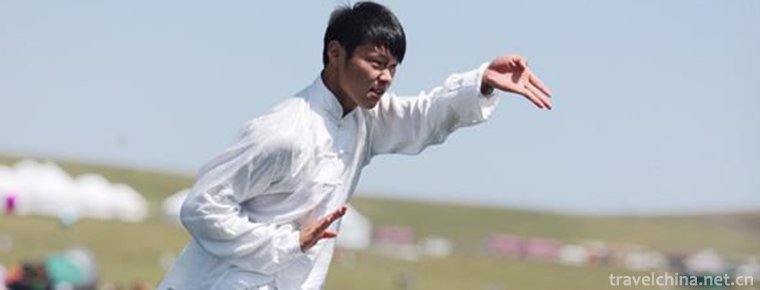
-
Cattle back MountainNiubeishan Mountain
Niubei Mountain is located in the border of Xingjing County and Luding County in Ya'an City.
Views: 171 Time 2018-10-13 -
Tibetan Metal Forging Technology
Zhaxi Coloured Gold, Silver and Copper Processing Plant in Xikaze City, Tibet, has a long history. It is the earliest gold and silver bronze enterprise in the region with strong technical force.
Views: 180 Time 2019-04-08 -
Ping Tan drama
Pingjiao Opera is a kind of high-pitched opera that sings opera and prose in local dialect. It is a unique local opera in Fujian Province. It was formed in the early Qing Dynasty, originated in Pingna.
Views: 123 Time 2019-06-09 -
Ping Ju Opera
Opera commentary is a kind of opera which is spread in the north of China. It is one of the most popular operas among the people and ranks among the five major Chinese operas. Some people once thought.
Views: 141 Time 2019-06-09 -
Legend of Su Xian
The legend of Suxian is a local folklore with a long history. Su Xian, Ming Lian, from Guiyang. Su Da lost his father in his early years and depended on his mother for his life. One year, the plague w.
Views: 197 Time 2019-06-17 -
Firing Techniques of Wuzhou Kiln Ceramics
The traditional firing technique of Wuzhou kiln is a local traditional handicraft technique in Zhejiang Province. Wuzhou kiln is located in Tiedian Village, Langya Township, Jinhua City. Jinhua was na.
Views: 117 Time 2019-06-30 -
Yandi Festival
"Yandi Mausoleum Festival" is divided into official and folk sacrifices. Folk sacrifice began in summer, official sacrifice originated in Zhou, and Emperor sacrifice originated in Tang Dynas.
Views: 165 Time 2019-07-10 -
Yihuanghe Bar Dance
Hebang dance is popular in Hedong area of Yihuang County, Jiangxi Province. It is a kind of traditional folk dance developed by mountain people from generation to generation, chopping branches on the .
Views: 251 Time 2019-07-12 -
Hua Tuo
Hua Tuo (about 145 ad - 208 AD), the character is changed into one. Pei country Qiao County People, Eastern Han Dynasty The famous medical scientist at the end of the year..
Views: 217 Time 2019-09-07 -
Cao Zhang
Cao Zhang (189 years - 223 August 1st), Zi Zi Wen. Pei Guo Qiao County ( Anhui People in Bozhou. Three countries period the Wei state of the Three-Kingdoms Period Imperial clan, general, Wei Wu Di Cao.
Views: 156 Time 2019-09-15 -
North China Electric Power University
North China Electric Power University is a national key university directly under the Ministry of Education. It is a key construction University of "211 Project" and "985 Project Advant.
Views: 245 Time 2019-09-22 -
Cheongsam goes to the world
The Organizing Committee of the 2010 Shanghai World Expo has customized 60 sets of tapestry cheongsam as gifts from the Chinese government to the wives of heads of state, each worth 100000 yuan..
Views: 335 Time 2020-12-11

